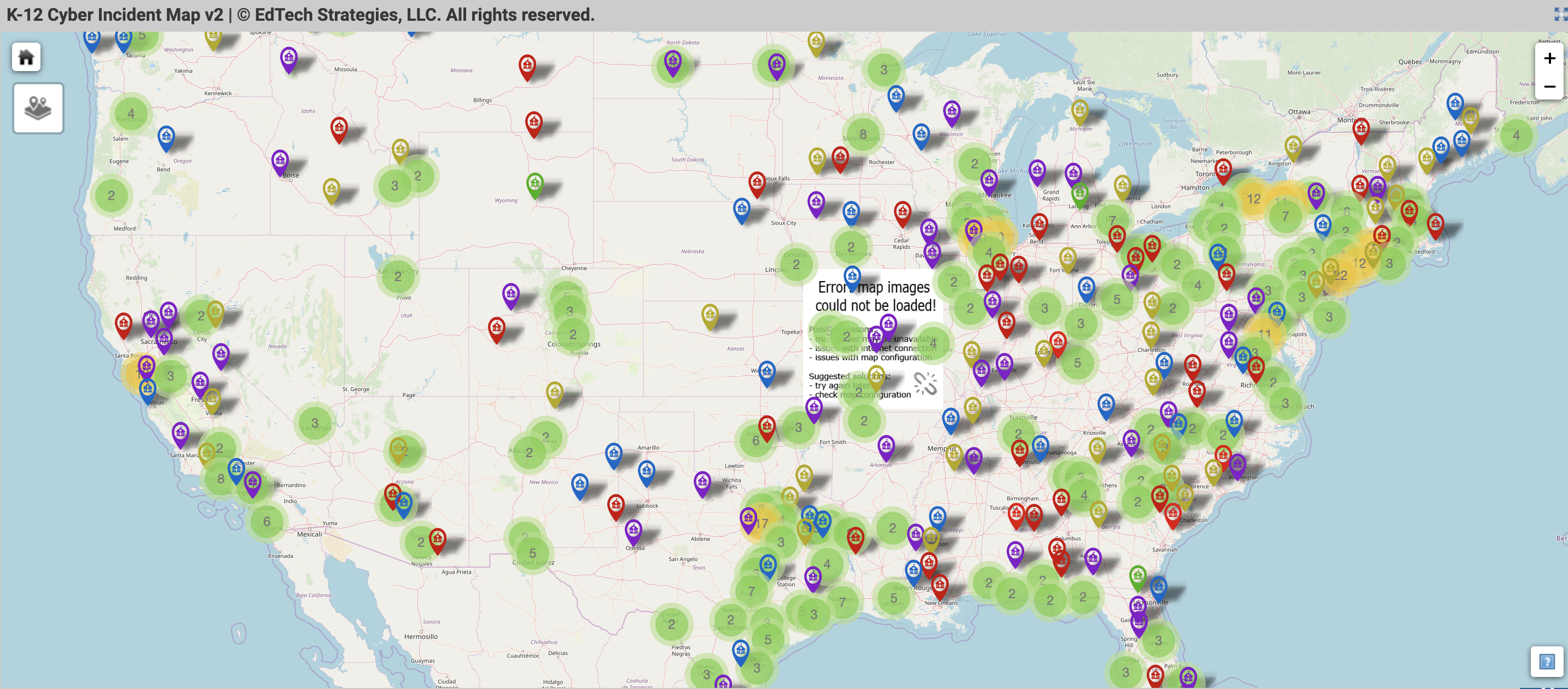K-12 Cybersecurity 2019 Year in Review Part II: K-12 Cyber Incident Data
Use the map to track incidents.

The countdown is on for the next Tech&Learning Leadership Summit in Washington, DC March 13 and 14 and Doug Levin, keynote speaker and founder of the K–12 Cyber Incident Map, has just released his annual report that identifies cybersecurity threats facing U.S. K–12 public schools and districts. His results will drive his session during the Summit. Each day this week, Tech&Learning will highlight parts of the report. For the full report, go to The K-12 Cybersecurity Resource Center
The K-12 Cyber Incident Map was launched in 2017 by EdTech Strategies, LLC as an effort to build an empirical base of information about the state of cybersecurity in U.S. public K-12 schools and districts. While other efforts exist to catalog trends in cybersecurity incidents and data breaches, including in education, none bring a lens that is both vendor-neutral and reliably actionable for U.S. policymakers, school leaders, IT and cybersecurity practitioners, and civil liberties advocates.
Widely cited research studies, such as Verizon’s annual “Data Breach Investigations Report” and Ponemon Institute’s “Cost of a Data Breach Study,” define the education sector overly broadly: combining K-12 and postsecondary institutions, public and private institutions, U.S. and global institutions all in a singular category of analysis. Other public sources of data breach incidents compiled by experts define their scope in ways that exclude the reporting of significant cybersecurity incidents (while including incidents that are wholly analog, such as the loss of control of paper-based records). While there may be lessons to be drawn from each of these valuable efforts for education stakeholders, the unique focus of the K-12 Cyber Incident Map has allowed it to become the definitive source of information about the state of K-12 cybersecurity.
Check the map here
Tools and ideas to transform education. Sign up below.
